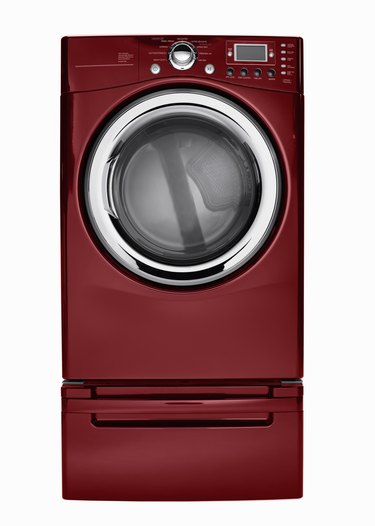
Fabric softeners can come in the form of a sheet, which is placed in the dryer unit and activated by heat, or in the form of liquid added to the washing machine before starting a wash. Fabric softeners, in liquid form, dilute in the water used to wash the clothes and are an efficient way of softening them, but liquid fabric softener can also clog your water drain.
How Fabric Softener Clogs Drains
Video of the Day
Liquid fabric contains chemicals that do not dissolve completely in water. These substances can produce a slimy substance over time, which can accumulate and turn into a deposit large enough to either partially or fully block a water drain, impeding use of your washing machine. To regain full use of the water drain, you must dissolve and remove the clog.
Video of the Day
Dissolving the Clog in an Accessible Drain
If you can gain access to the water drain, you can dissolve the clog by dropping 3 seltzer tablets into the drain and immediately pouring a cup of vinegar down the drain. After allowing the solution to set for a few minutes, you can pour in a cup of hot water. The seltzer and vinegar solution should dissolve the fabric softener deposit enough for the hot water to dislodge it and allow it to pass through the pipe.
Dissolving the Clog Without Drain Access
If the drain isn't accessible, you can pour 1/2 cup of baking soda into the empty washing machine drum followed immediately by pouring 1/2 cup of vinegar into the drum. Shut the washing machine door, switch the setting to the hottest cycle and allow the washing machine to run. The water, mixed with the solution, will drain through the water pipe and should dissolve the fabric softener clog.
Maintenance
You can prevent future fabric softener clogs from occurring by using borox on a monthly basis. Combine 2 cups of hot water with 2 cups of borax in a waterproof measuring container. Pour the solution into the drum of your washing machine or directly down the water drain if it is accessible. Check the borax product label for specific application instructions. This monthly procedure will help dissolve any small fabric softener deposits before they get the chance to accumulate and block the drain.